How To Fix 308 Permanent Redirect Issues - Top Tips
Site Audit Issues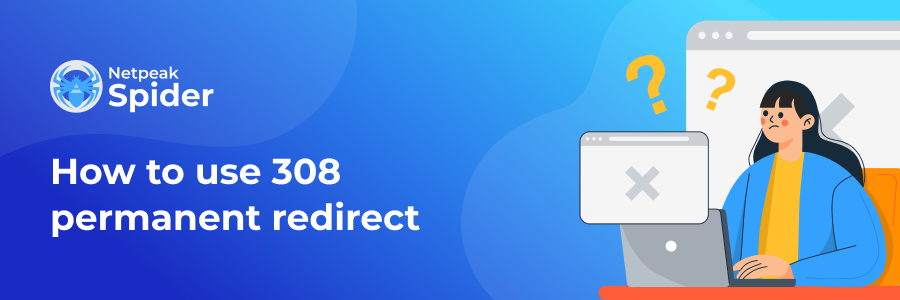
Content:
- What Does 308 Permanent Redirect Mean?
- Most Common Causes for the 308 Permanent Redirect Status Code Issues
- How To Fix 308 Permanent Redirect Issues — Top Tips
- How To Fix The "308 Permanent Redirect” With Netpeak Spider?
- Wrapping Up
If you've ever encountered the 308 error , this article is exactly for you. Here, you'll find the main reasons causing redirect -related issues on your website , together with the recommendations for fixing them. We'll also show you how to use Netpeak Spider as a crawling tool to detect and prioritize any existing issues your site is currently facing.
What Does 308 Permanent Redirect Mean?
The 308 status code means the link you want to access was permanently moved to a new URL . Fixing this issue is significant for SEO as it will ensure that any links to an old URL will now bring you to the new one instead. This way, you can improve your website’s search engine rankings.
Some of the other status 308 implications for SEO include indexation, link equity transfers, caching and crawling, monitoring the site's performance, etc. When your website faces redirect -related issues, it can affect its overall performance and result in traffic losses.
Most Common Causes for the 308 Permanent Redirect Status Code Issues
If you see the 308 permanent redirect code , there might be several reasons for it to appear. Below is the list of the most common things that can cause the issue.
Looping redirects
The 308 redirect status code may cause a loop in ULRs if the source link points right back at itself or if a redirect chain leads back to the initial URL .
Incomplete redirect chains
A link might sometimes go through multiple redirects before it reaches a final destination. For instance, URL A redirects to URL B, which then leads to URL C. Such chains may worsen the UX and fail to pass the full link equity.
Search engines not recognizing the redirect
Sometimes, a search engine may not recognize the status code 308, eventually leaving the old URL unindexed.
Incompatibility with specific bots or browsers
It happens that sometimes, older bots or browsers can't handle the 308 response code as expected, which leads to related issues.
How To Fix 308 Permanent Redirect Issues — Top Tips
Once you know the possible issues that may cause problems related to the 308 response code , you can get to solving them. In this section, you'll find the most common tips to help you fix the redirect issues quickly and efficiently.
Modify redirect rules
To prevent redirect loops from emerging, check out your redirect rules to make sure none of them leads back to the source URL. Once you identify the loop, you should change the redirect rule so that a link will point to a proper destination URL .
Implement direct routing
Instead of adding numerous chained redirects , make sure one URL directly shifts to another one. Try to do so by modifying the .htaccess file, a corresponding server configuration, or your CMS.
Make sure the 308 status code is implemented correctly
For that purpose, try using the Google Search Console's URL Inspection Tool and request indexing for the new link. Over time, the new URL should replace the old one in search engine indices.
Review your site's traffic stats
This step will help you determine your target audience's most significant browsers or user agents. If some users or bots don't support the status 308, consider using a more typical 301 status code , a.k.a. “Moved permanently.” As an alternative, try implementing user-agent detection and add relevant redirects based on the visitor's bot or browser .
How To Fix The "308 Permanent Redirect” With Netpeak Spider?
Netpeak Spider is a multi-purpose SEO tool and website crawler that detects over 100 website -related issues and even provides practical tips on fixing them. It also offers convenient data filters and segmentation options to help you extract exactly the data you need for your reports and further operations.
Thanks to Netpeak Spider, you can integrate and retrieve information on any website's metrics from Google Analytics and Search Console, meaning you'll get even deeper insights into how your own or competitor's site is performing.
However, the tool's features continue beyond that. Netpeak Spider also offers a built-in redirect checker that shows you almost any type of related issues (including the permanent redirect code ) your web pages are facing. Together with that, here's what else you can check via this helpful app:
No. of redirects from the current URL
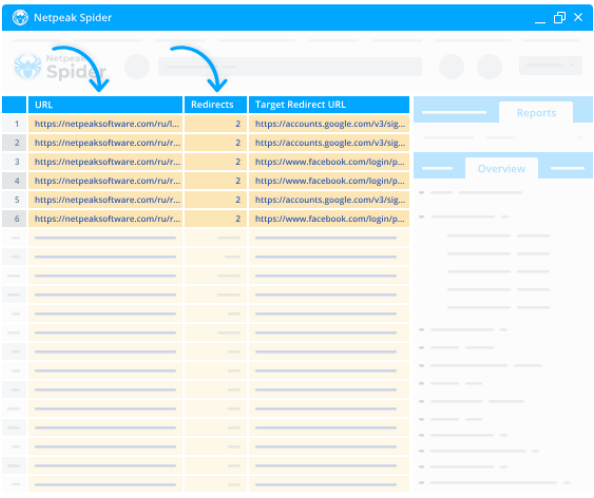
This tool's feature helps you detect all the existing redirect chains as well as how many redirects are there on your page within each chain. Check out this feature in the Crawling and Indexing section.
Target redirect URL
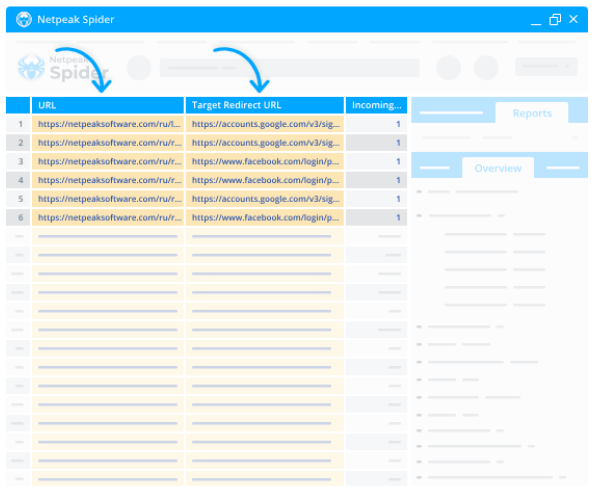
This feature shows you the target URL of a single redirect or even a complete chain, if there are any.
Incoming links and final URLs
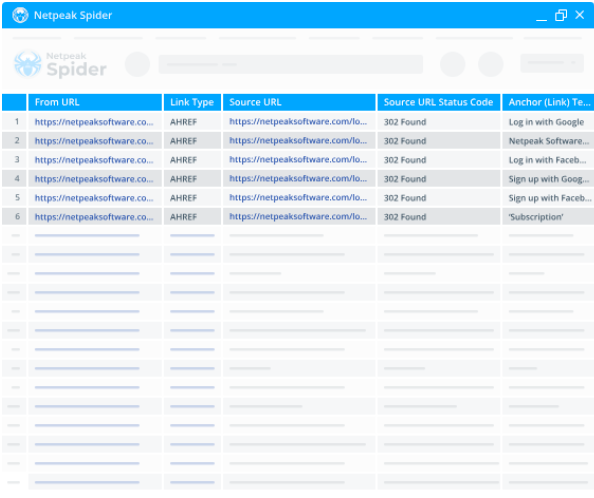
Netpeak Spider will show you a complete list of incoming links and redirects associated with every page you've added for a checkup. After crawling is done, you can get an XLSX file with a comprehensive redirect analysis report.
Redirect chains

Netpeak Spider also provides a full report on the redirect chains associated with every URL you've uploaded for a checkup. In just a few moments, you'll get an XLSX file with all the data you've crawled so far.
Redirects blocked by robots.txt
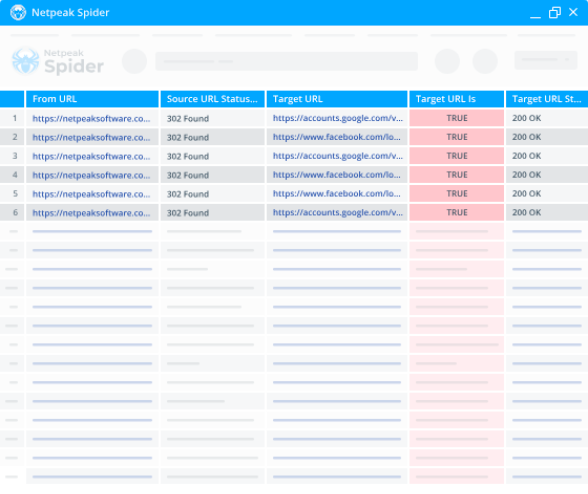
A robots.txt file shows crawler tools what URLs they can reach on your site. This usually helps avoid overloading a web page with multiple requests. Netpeak Spider quickly detects these links and displays them on a general dashboard.
Redirects with improper URL formats
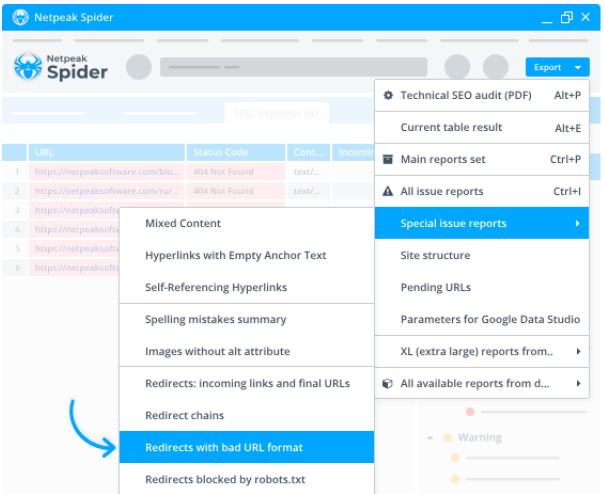
Some redirect links may perform poorly and contain formatting bugs like a wrong domain or missing letters. Netpeak Spider checks out the redirects on your website and defines if any need to be formatted better.
Running an in-depth SEO analysis
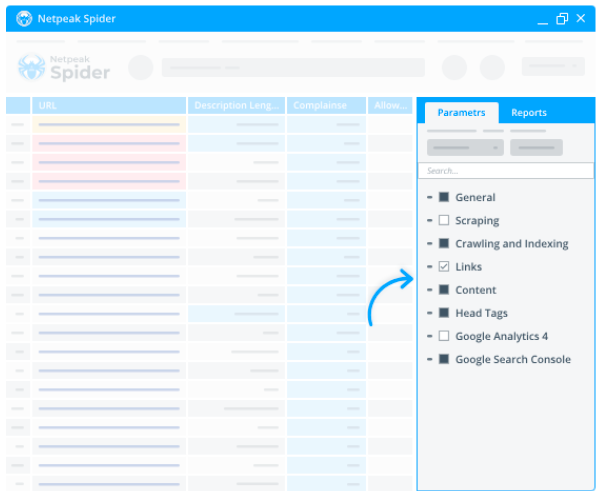
Except for analyzing redirect URLs, Netpeak Spider runs in-depth SEO checks and provides detailed reports based on selected parameters. You can retrieve crawling and indexing data , get insights on your own competitors' site rankings, etc. You can also extract data from Google Analytics and Search Console to evaluate your website's overall performance and make necessary changes to your optimization strategy.
Wrapping Up
The implications of the 308 status code are essential for SEO and vary from link equity transfers to fixing possible indexing challenges. However, it comes with its own range of pitfalls, like looping redirects or browser incompatibility.
In this article, we've covered the main tips on fixing respective issues and how you can use Netpeak Spider to predict and avoid them in the future. Try it for free and start fixing the existing redirects on your website right away!



.png)
